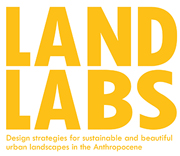
Ljubljana
The landscape laboratory site is located at the Southern edge of the municipality along the border with Croatia. The area is characterized by almost a millennium long extraction of salt and is one of the last active salt extraction sites at the Adriatics. The production on the northern part has been modernised at the beginning of the 20th century while at the southern part traces of medieval salt-production landscape are still present. Currently, the site is caught in conflicts between the protection of nature and cultural heritage, the municipality’s economic aspirations, local population, private investors etc. The site’s rich and complex history, closely connected to the Venetian Republic and the present Italian minority of Piran, is being flattened by economic pressure giving priority to tourism over local salt and agricultural production, resulting in a clash of interests, threatening to lose the world’s unique cultural landscape. This clash misses the opportunity to develop potentials of the site for the benefit of all interested parties. There’s an urgent need for a long-term landscape development plan.
The landscape laboratory site is located at the Southern edge of the municipality along the border with Croatia. The area is characterized by almost a millennium long extraction of salt and is one of the last active salt extraction sites at the Adriatics. The production on the northern part has been modernised at the beginning of the 20th century while at the southern part traces of medieval salt-production landscape are still present. Currently, the site is caught in conflicts between the protection of nature and cultural heritage, the municipality’s economic aspirations, local population, private investors etc. The site’s rich and complex history, closely connected to the Venetian Republic and the present Italian minority of Piran, is being flattened by economic pressure giving priority to tourism over local salt and agricultural production, resulting in a clash of interests, threatening to lose the world’s unique cultural landscape. This clash misses the opportunity to develop potentials of the site for the benefit of all interested parties. There’s an urgent need for a long-term landscape development plan.



